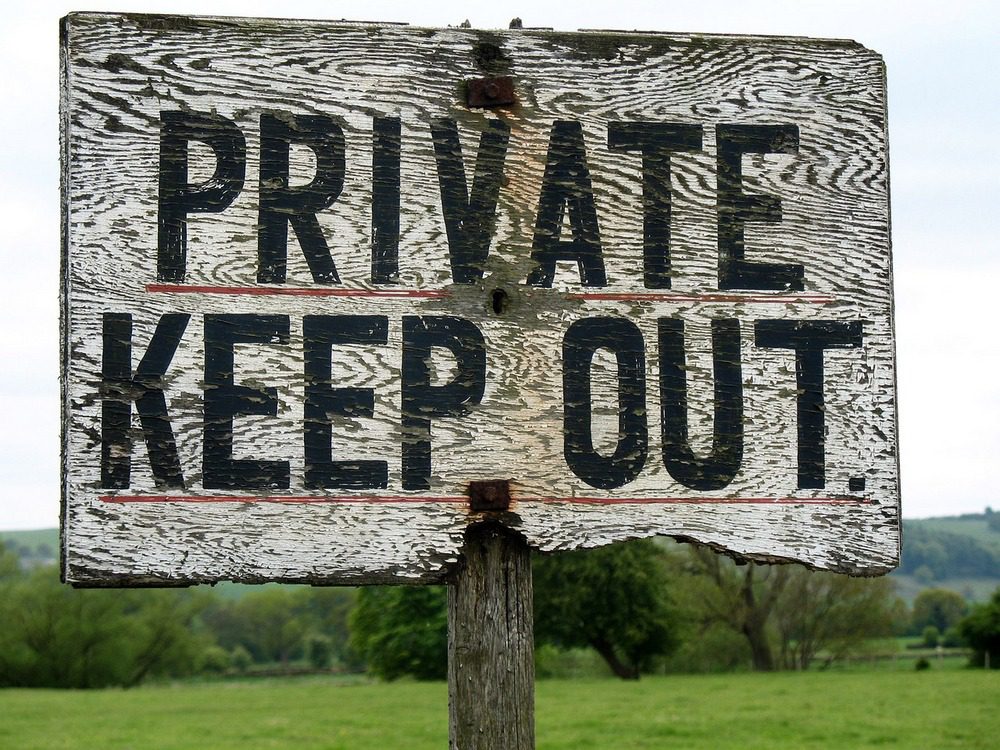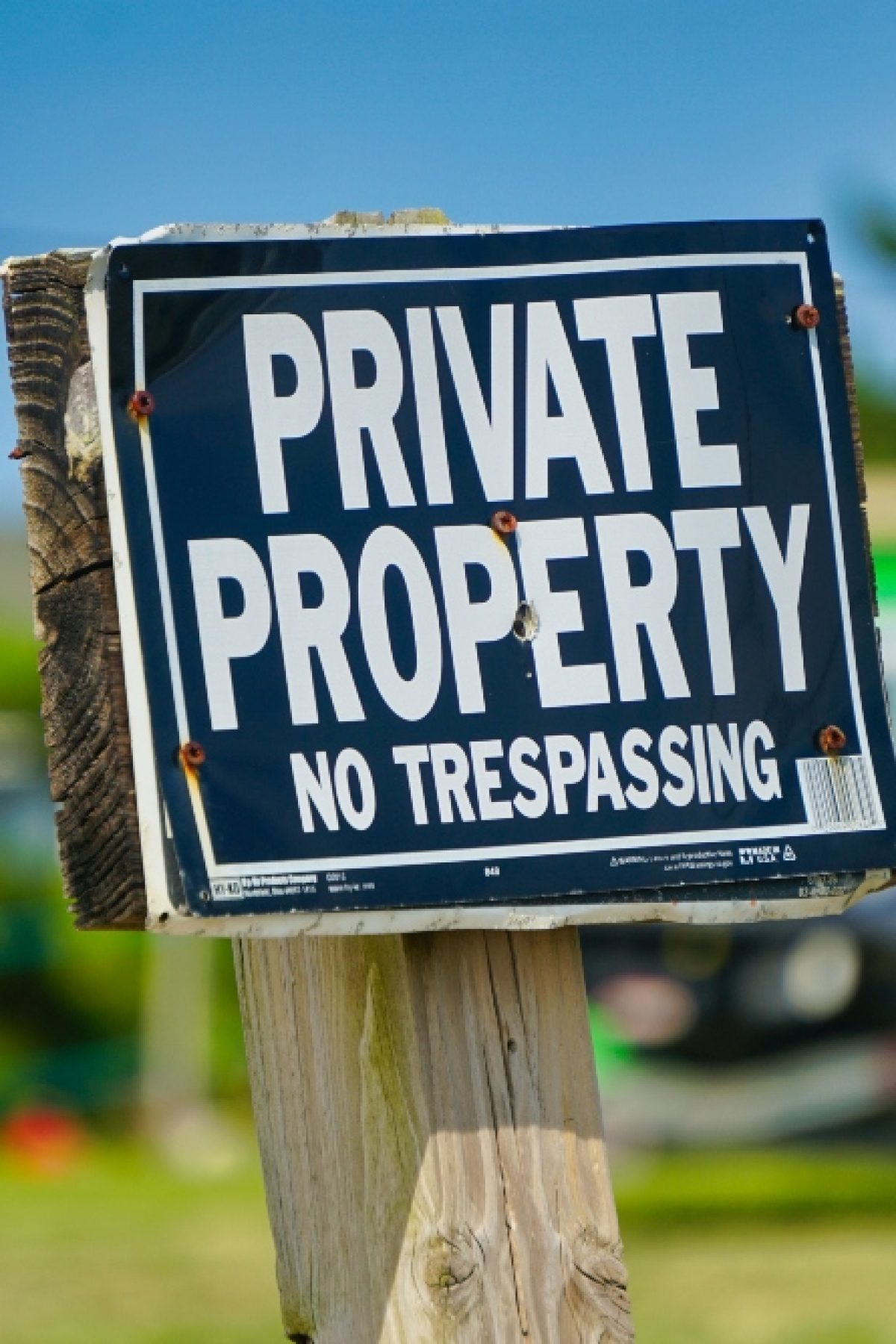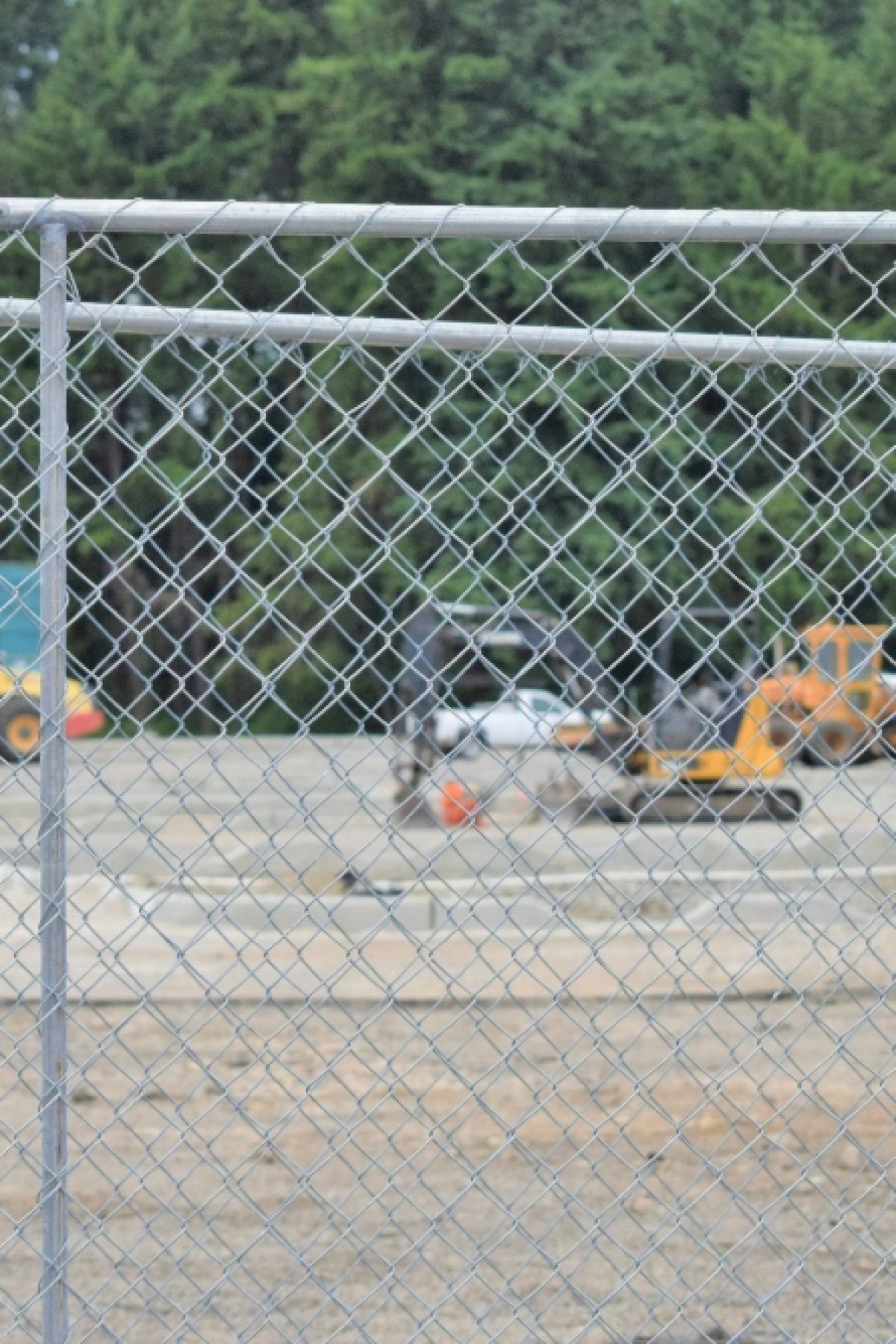
If you’ve invested in a piece of property, you hope you, your family, and your friends will be the only ones with access to the property. But that doesn’t always happen due to trespassing, which could compromise your safety and the security of your property.
In most cases, catching a trespasser may not be the best option, as it could result in a commotion that could endanger the lives of both of you. The best approach is to prevent trespassers from accessing your property in the first place.
Below are some tips for keeping trespassers off your property.
Contents
Fence Your Property to Prevent Trespassers
A fence serves as a physical barrier that not only marks the perimeters of your property but also plays a critical role in safeguarding your premises against unauthorized entries. By clearly defining boundaries, fencing acts as the first line of defense in your efforts to prevent trespassers. Whether you’re looking to protect a sprawling ranch or a modest backyard, selecting the right fencing option can reduce the likelihood of trespassing incidents.
Barbed Wire Fences for Large Properties
A barbed wire fence is often the most effective solution for those with extensive land such as ranches or farms. Its sharp edges are a strong deterrent to potential trespassers, making it an ideal choice for preventing unauthorized access over vast areas. Additionally, barbed wire fencing is cost-effective for covering larger perimeters, offering protection without breaking the bank.
Chain Wire Fences for Economic Security
Smaller properties can benefit from the installation of chain wire fences. Not only are they budget-friendly, but they also offer a durable solution to secure your property’s boundaries. Chain wire fencing can prevent both human trespassers and unwanted animals from entering your space, while safely containing pets within your premises.
The Benefits of Living Fences
For property owners seeking a more aesthetically pleasing option, living fences of dense shrubbery or trees can provide an effective barrier. While not as impenetrable as traditional fencing, living fences can deter casual trespassers and add beauty to your property. They subtly communicate your desire to maintain privacy, reducing the chances of accidental trespassing.
Implementing the right fencing strategy is crucial to preventing trespassers from accessing your property. Considering your property’s size and budget, you can choose a fencing solution that offers security and peace of mind.
Erect Signage
Deploying “No Trespassing” signs is more than a mere formal declaration of private property; it is an essential component of a layered security strategy to prevent trespassers. These signs serve as a direct communication tool, indicating that the property is actively monitored and that unauthorized access is not permitted. When used effectively, signage can deter potential trespassers from encroaching on your property, thereby protecting your privacy, safety, and legal rights.
Optimal Placement of No Trespassing Signs
- Visibility and Accessibility: The effectiveness of “No Trespassing” signs significantly depends on their placement. Signs should be installed at eye level in areas easily visible to anyone approaching the property. The best locations for these signs are along the property’s perimeter, especially near common entry points or paths that trespassers might use. Ensuring signs are placed regularly around the property boundary can effectively communicate your no-tolerance policy against trespassing.
- Legal Compliance: It’s imperative to familiarize yourself with local laws regarding posting “No Trespassing” signs. Many jurisdictions have specific requirements about these signs’ size, wording, and placement to be legally enforceable. Adhering to these regulations enhances the deterrent effect of your signs and strengthens your legal position should you take action against trespassers.
Crafting an Effective Message
- Clarity of Consequences: To maximize their deterrent effect and prevent trespassers, “No Trespassing” signs should clearly articulate the consequences of trespassing. This might include warnings about legal action, fines, or prosecution. The message should be concise, easily readable from a distance, and unambiguous to prevent trespassers. Leaving no doubt about the seriousness of trespassing violations.
- Impression of Surveillance: Incorporating signage that suggests the presence of surveillance cameras or security patrols can further prevent trespassers. Even if such security measures are not in place, the implication of being watched can make trespassers think twice before entering your property. This psychological barrier complements physical deterrents, enhancing overall security.
Erecting “No Trespassing” signs is a critical step in your endeavor to prevent trespassers from accessing your property. You can significantly reduce unauthorized access by strategically placing clear, legally compliant signs that convey the consequences of trespassing. Signage serves as a visual deterrent and reinforces your commitment to protecting your property.
Install Security Cameras at Strategic Places
Security cameras have become indispensable in the modern arsenal to prevent trespassers. Cameras serve as a clear warning to potential intruders about the monitored nature of a property, significantly reducing the likelihood of trespassing attempts. Beyond mere deterrence, these cameras provide crucial evidence that can aid in identifying and prosecuting trespassers.
Selecting the Right Type of Security Cameras
- Motion Detection Cameras: Motion detection cameras are particularly effective for trespasser prevention. These cameras are designed to activate and record when movement is detected, ensuring that all suspicious activity is captured without the need for continuous recording. This feature conserves storage space and streamlines the process of reviewing footage, as it highlights moments of potential security breaches.
- Infrared Cameras for Low-Light Monitoring: The challenge of maintaining security visibility during nighttime or in poorly lit areas is adeptly met by infrared cameras. These cameras can capture clear footage in low-light conditions, making them indispensable for comprehensive 24/7 property surveillance. While infrared cameras may come with a slightly higher price tag, the investment is justified by their enhanced security, ensuring that darkness no longer offers cover for trespassing activities.

Optimizing Security Through Technology
- Real-Time Notifications: Modern security camera technology advancements include sending real-time notifications to property owners’ smartphones upon detecting motion. This feature allows for immediate awareness of potential security breaches, enabling a swift response. In situations where trespassing is suspected, being promptly informed enables property owners to verify the threat and contact law enforcement to address the intrusion effectively.
- Two-Way Audio Features: Some of the best security cameras are equipped with built-in speakers, offering an additional layer of deterrence through two-way audio. This capability allows property owners to communicate directly with individuals on their property, as an immediate deterrent to potential trespassers. Whether it’s warning off children taking shortcuts or confronting intruders verbally, the presence of two-way audio can prevent trespassing incidents before they escalate.
The strategic installation of security cameras equipped with motion detection and infrared capabilities is a cornerstone of effective trespasser prevention. Security cameras serve as a visual deterrent and provide a means of rapid response and evidence collection, making them an essential component of any comprehensive property security strategy.
Sue Trespassers
Implementing legal measures is a key strategy in the broader effort to prevent trespassers from accessing your property. This approach deals with the aftermath of trespassing incidents and is also integral in deterring future attempts. Property owners can significantly enhance their property’s defense against unauthorized entry by demonstrating a willingness to take legal action.
The Role of Legal Action in Preventing Trespassers
- Sending a Deterrent Message: Suing trespassers is a clear and effective way to communicate that trespassing will not be tolerated and will be met with serious consequences. This legal stance is crucial in preventing trespassers, as it establishes a precedent that unauthorized entry carries significant legal risks. The deterrent effect of potential legal action plays a pivotal role in dissuading individuals from attempting to trespass on your property.
- Seeking Damages to Prevent Future Trespassing: In instances where trespassers cause damage, pursuing legal action for compensation addresses the immediate harm and contributes to preventing future trespassing. The prospect of facing legal repercussions and the obligation to pay damages can be a powerful deterrent against potential trespassers contemplating unauthorized access to your property.
Effective Legal Strategies to Prevent Trespassers
- Collaboration with Property Law Experts: Engaging with attorneys specializing in property law is advisable to effectively prevent trespassers through legal means. These legal professionals can guide you through the process of taking action against trespassers, from gathering evidence to representing your case in court. Their expertise ensures that you have a strong legal foundation for your efforts to prevent trespassers.
- Evidence Collection is Key to Prevent Trespassing: A successful legal action against trespassers often hinges on the availability and quality of evidence. To prevent trespassers effectively, property owners should diligently collect and preserve evidence of trespassing, such as video recordings, photographs, and witness statements. This documentation is crucial for substantiating claims against trespassers and reinforcing the legal deterrent against future trespassing attempts.
Taking legal action against trespassers is an essential aspect of a comprehensive security strategy to prevent unauthorized access to your property. Property owners can significantly prevent trespassers by highlighting the legal consequences of entering and actively pursuing justice in property violation cases.
Block Valuable Items from View
To effectively prevent trespassers from accessing your property, minimizing the visibility of high-value items that might attract unwanted attention is essential. This strategy is a crucial layer in your defense against potential intruders, reducing the likelihood of your property being targeted for theft or vandalism.
Let’s explore how to implement this approach more effectively.
Strategic Concealment to Prevent Trespassers
High-value items visible from your property can be a magnet for trespassers. The sight of expensive electronics, vehicles, or even unattended packages can increase the risk of trespassing incidents, as these items suggest potential rewards for intruders.
To prevent trespassers, it’s crucial to adopt strategies that reduce the visibility of such items. Lowering your property’s appeal to potential thieves and vandals is always a smart move
Effective Ways to Hide Valuables
- Indoor Visibility: Ensure that valuable possessions inside your home, such as electronics, artwork, and jewelry, are not visible from windows or external viewpoints. Using curtains or blinds can obscure the interior view, significantly reducing the temptation for potential trespassers.
- Vehicle Security: An exposed, high-end vehicle can attract admiration and the wrong kind of attention. To prevent trespassers and potential theft, keep your vehicle in a garage or under a car cover to hide its presence and details from prying eyes.
- Managing Deliveries: The phenomenon of ‘porch piracy’ has escalated with the rise of online shopping. To prevent trespassers tempted by visible packages, consider options like secure delivery lockboxes, rerouting packages to a hidden area, or picking them up from postal services. This protects your deliveries and removes a potential incentive for trespassing.
Reducing Attraction
By removing visible incentives, you effectively make your property less attractive to potential trespassers. This strategy is vital to a broader effort to prevent unauthorized access, working alongside physical barriers, surveillance systems, and signage to create a comprehensive security setup. The goal is to ensure that trespassers are deterred not only by the challenges of entering your property but also by the lack of visible rewards.
Preventing trespassers involves a multifaceted approach where concealing valuables plays a critical role. By implementing these strategies, property owners can significantly decrease the likelihood of trespassing and related crimes.

Liaise With Your Neighbors
To prevent trespassers from accessing your property, fostering strong relationships with neighbors emerges as a pivotal strategy. This collaborative approach not only enhances the security of your premises but also contributes to the safety and well-being of the entire neighborhood.
Let’s explore how engaging with your neighbors can fortify your efforts to secure your property.
Building a Community Defense Against Trespassers
Neighbors can be invaluable allies in the fight against trespassing. In many cases, trespassers exploit the lack of communication and oversight within a community to carry out their activities unnoticed. By establishing a rapport with your neighbors and openly discussing the issue of trespassing, you can foster a sense of collective responsibility for the community’s safety. This united front makes it much harder for trespassers to operate undetected.
Sharing Information and Strategies
Open communication with your neighbors allows for sharing information about suspicious activities and known trespassers. This collective awareness can deter individuals considering trespassing, as they realize the neighborhood is actively monitoring and responding to such behavior. Additionally, neighbors can share effective strategies and tools they’ve employed to prevent trespassers, from installing security cameras to organizing neighborhood watch programs.
Collaborative Surveillance
Neighbors can serve as eyes and ears on the ground for property owners who spend significant time away from their homes. By informing them of your schedule and any expected visitors, you can ensure that any unusual activity is quickly noticed and reported. This arrangement benefits all parties involved, as it enhances the overall security of the neighborhood, making it less attractive to trespassers.
United Front in Problem-Solving
When neighbors collaborate to address trespassing, they can also work together to identify and mitigate the root causes attracting trespassers to the area. Whether it’s improving street lighting, securing vacant properties, or addressing social issues contributing to trespassing, a community that works together is better equipped to find long-term solutions.
Leveraging Technology for Enhanced Collaboration
In today’s digital age, neighbors can utilize technology to strengthen their collective security efforts. Social media groups, neighborhood apps, and messaging platforms can facilitate instant communication, allowing residents to alert each other about suspicious behavior or trespassing incidents in real-time. This immediate exchange of information further complicates trespassers’ efforts to access undetected properties.
Liaising with your neighbors is a crucial component of a comprehensive strategy to prevent trespassers from accessing your property. Building strong relationships and fostering open communication can create a vigilant community that actively deters trespassing.
Stop Talking About Your Hunting Property
Discretion plays a pivotal role in preventing trespassers, particularly on hunting properties. The excitement of sharing hunting stories and successes is natural for hunting enthusiasts. However, the accidental sharing of specific details about your property and its wildlife can attract unwanted attention, increasing the risk of trespassing and poaching.
This section delves into the importance of being mindful about the information you share regarding your hunting property to prevent trespassers effectively.
The Risks of Oversharing
Discussing the specifics of the game on your property, especially mentioning large or rare animals, can inadvertently turn your land into a target for trespassers and poachers. The allure of a trophy buck or abundant wildlife can be too tempting for some, leading them to unlawfully enter your property. To prevent trespassers, limiting the amount of detailed information shared about the wildlife on your land is crucial.
Strategies to Prevent Trespassers Through Discretion
Be selective about whom you share details with regarding your hunting property. Close friends and family whom you trust implicitly are safer confidants than acquaintances or fellow hunters met in passing. This selective sharing helps ensure that information about your property does not fall into the wrong hands, significantly reducing the risk of trespassing.
The method to prevent trespassers involves educating your close circle about the importance of discretion. By explaining the potential consequences of oversharing, you can enlist their help in keeping your property details confidential, further safeguarding against trespassing.
The strategy to prevent trespassers from accessing your hunting property extends beyond physical barriers and surveillance. It encompasses carefully managing information, particularly concerning the wildlife residing on your property.

Invest In Good Lighting
Good lighting is an excellent way to prevent trespassers and potential burglars. If valuable items are on your property, they could be a huge temptation for trespassers such as burglars. Sometimes these trespassers will make a move when it’s dark. So keeping your property well-lit can act as a deterrent.
You should opt to install motion detection lights. The best thing about using motion detection lights is that they have an element of surprise, which can effectively scare trespassers. Some motion sensor lights also act as alarm triggers that could notify you of movement on your property.
Final Words
While trespassing may seem like not much of a concern, it can potentially cause problems that could have you bearing responsibility for your actions. So you will want to make a deliberate effort to keep trespassers out, such as adhering to the tips highlighted in this post.








